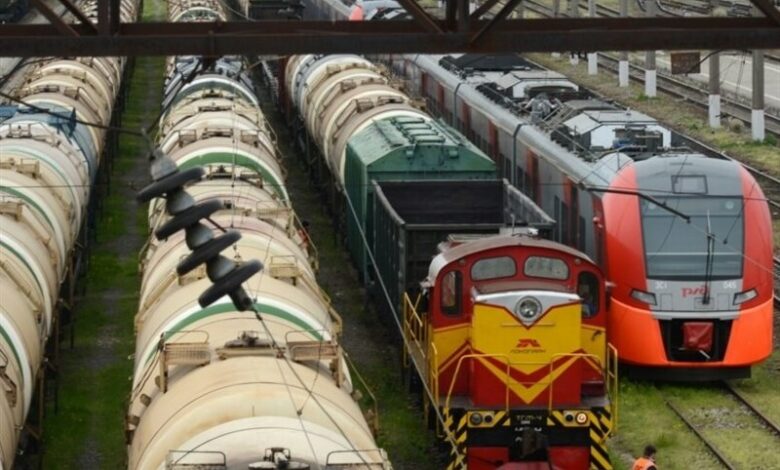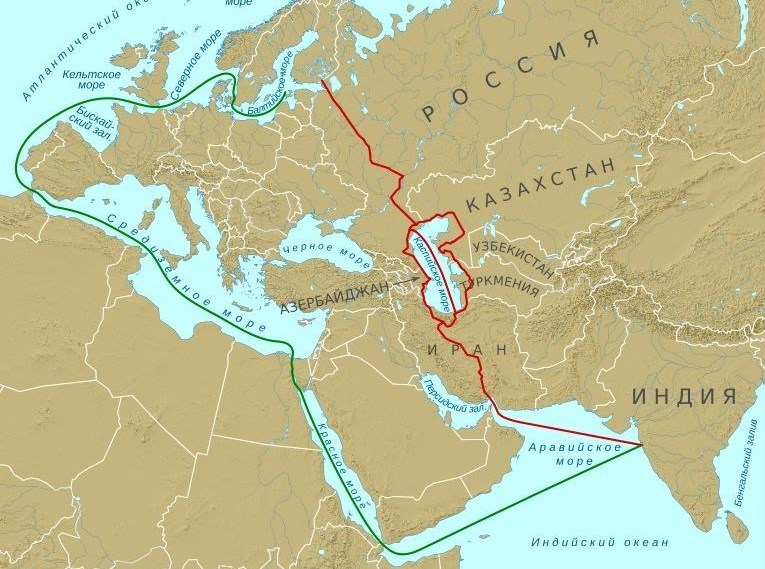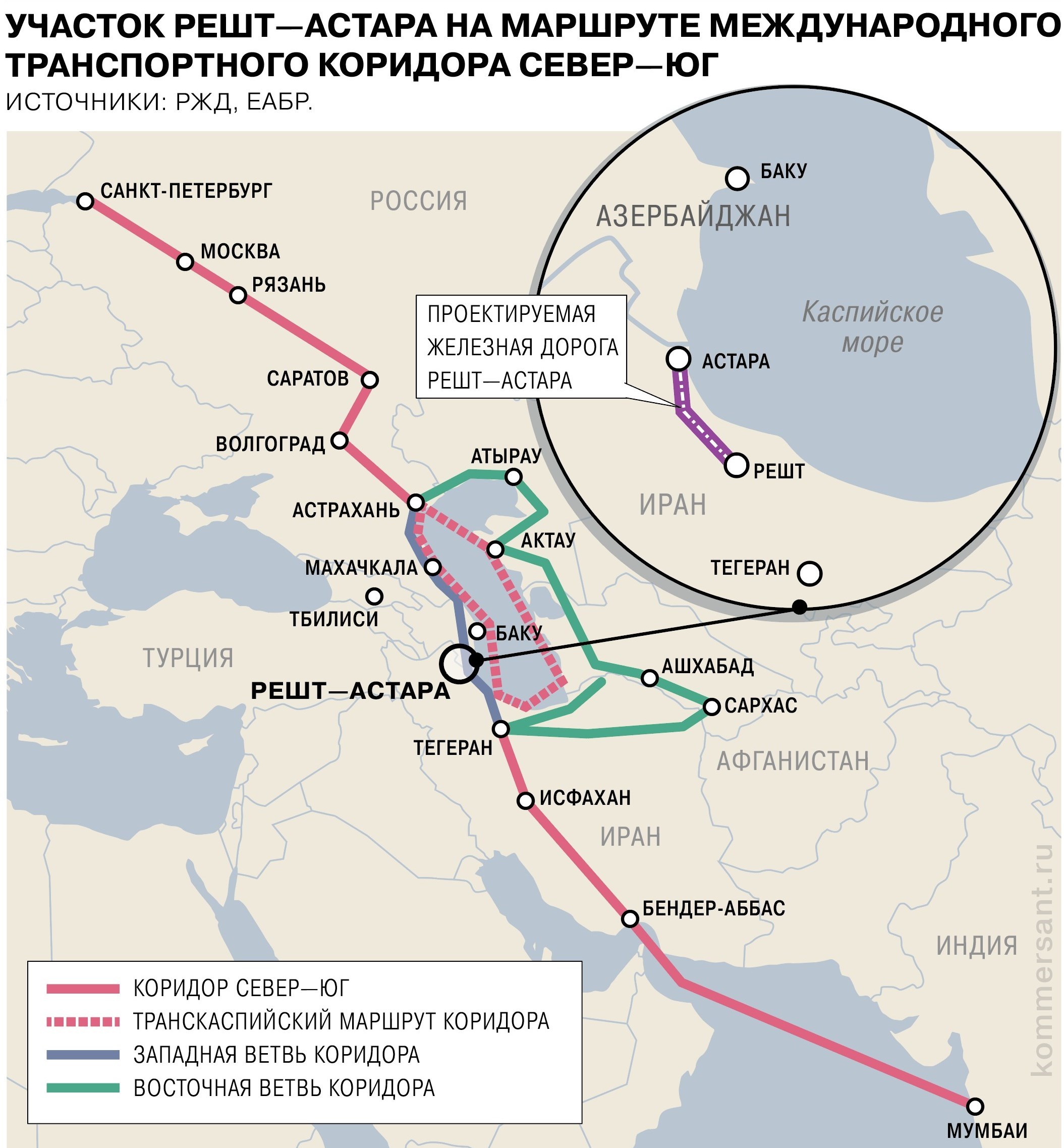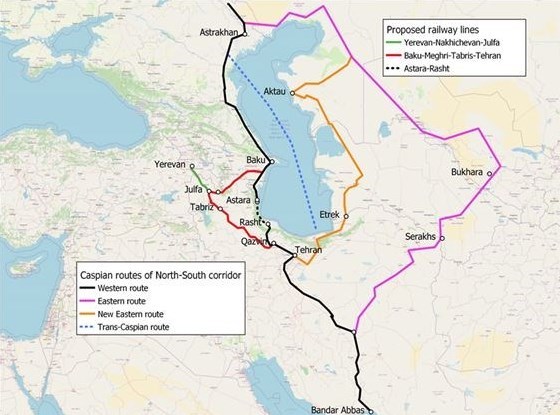Iran’s opportunities in the shadow of Russia’s need to complete the North-South corridor

| Iran aims to modernize its infrastructure through Russian investment, and Moscow seems to have accepted the fact that it will have to pay the bills for the development of Iran's transportation network. |
According to the international group Tasnim News Agency, the North Transport Corridor – The south of the Indian Ocean, passing through the territory of Iran to Russia, is becoming an important and strategic route for Moscow in the direction of unhindered transit of goods. The North-South project has a positive and profitable perspective, but the main problem of this mega-project is that it is highly dependent on the state of infrastructure and the administration of internal affairs of Iran.
Russia has already volunteered to build A part of the corridor, the Rasht-Astara railway in Iran, has announced its readiness at the expense of the government, and it is likely that this is not the last investment that Moscow needs to make in Iran in order to complete the north-south route.
Iran does not have the necessary money to complete these projects and without investment, this corridor cannot work normally. Therefore, Russia should invest in roads, ports, warehouses and infrastructure related to this corridor.
Overview of the North-South Corridor from Mumbai to St. Petersburg and a map of the old route of the two ports from Suez Canal
Troublesome Road
When in mid-March 2023 (Esfand 1401), Vladimir Putin advised Russian businessmen to invest in the construction of the Rasht-Astara railway line in Iran, there was no doubt that such recommendations would be of interest to the Russian private sector. .
Although Moscow’s final decision was determined in May 1402 and the answer was very simple: the Russian government paid a loan of 1.3 billion euros to Iran for the implementation of this project, and in terms of attracting capital The Russian private sector did not speak any more.
The project of completing the railway in Iran is not new, this long-term construction has not been completed for about 20 years. In 2005, Russia, Iran and Azerbaijan signed an agreement to build a railway line from Qazvin in Iran to Astara in Azerbaijan. who were still active towards Russia. From there, the Iranian railway network also extended from the Persian Gulf to Qazvin. Therefore, in order to connect Russia to the ports leading to the Indian Ocean, it was only necessary to build a route of about 350 km. In 2005, the parties announced that they could complete the above route in two years and make it ready for service. However, operational construction in Iran started in 2009 (1387). and within 10 years only almost half of the intended route, Qazvin-Rasht railway line section, was created and launched. The construction of the second part of the route (Rasht-Astara) was technically more difficult and required more funds.
The map of the three main routes of the north-south corridor and the location of the Rasht railway line – Astara in the rail corridor
Iran could not afford this investment due to various reasons, including numerous Western financial sanctions, so it tried to attract foreign credit. Azerbaijan agreed to finance about 50% of the 500 million euro cost of this project in 2017. However, it was not possible to implement this project quickly, and in 2018, the United States once again imposed sanctions on Iran, and after that, Baku doubted the possibility of investing in Iran.
Officially, during all this time, the work on the Rasht-Astara section did not stop. But the Iranian government clearly did not have the financial conditions to complete this project, or it was not among Tehran’s investment priorities. The construction of this project was being done slowly, so after the start of the war in Ukraine and the conditions that were imposed on them, the Russians decided to invest in the completion of the Rasht-Astara railway project.
uncertain profitability
based on the plan, Rasht Railway – Astara, 162 km long, should be built and commissioned in five years, i.e. by the end of 2027. However, it is not possible to determine a specific period of time regarding the return and profitability of the investments made. Although the North-South project has become a strategic and geopolitical matter for the Russians, from the point of view of profitability and economic efficiency, a specific time frame cannot be considered for this project.
The connection with the economic field of this project is brought up, the degree of competitiveness of railway and road lines in Iran’s special conditions. Because of the high gasoline subsidies it pays to its road transport fleet (a liter of gasoline today costs approximately $0.029 (2.68 rubles) with exchange rate The free market has a price. It should be noted that currently the price of each liter of gasoline in Russia is approximately between 51 and 69 rubles) and also the conditions of Iran’s road network, which are more developed at the level of the country, competition makes it more difficult between road and rail transportation.
In addition to Iran, the cargo must also pass through the Republic of Azerbaijan, and considering the conditions of relations between Tehran and Baku and the history of disruptions by the Azerbaijani side in transportation The goods from Iran do not seem to be a problem for the government of Baku in the flawless implementation of the passage of goods in this corridor. Competing is the corridor that Baku is actively completing in the post-war South Caucasus, and the corridor that would connect Azerbaijan (and possibly Russia) to the Mediterranean via Armenia and Turkey.
On the other hand, Russian media and experts have raised questions about the financial aspects of the project. It is clear that it was no accident that the matter finally ended with a loan from the Russian government. Because this project apparently did not have the necessary attractions for the Russian private sector, and on the other hand, the Iranian government did not have the necessary resources due to the sanctions.
Of course, this is not the first time that Moscow is forced to grant low-interest loans with long-term repayment to Tehran. For example, in 2021, Russia granted a loan of 5 billion dollars to Iran to be allocated in the construction projects of the Sirik thermal power plant, the electrification of the Garmsar-Inche-Brun railway, as well as the completion of phase 2 of the Bushehr nuclear power plant. All this happens in a situation where Iran is suffering from a severe shortage of currency due to sanctions.
As a result, Tehran’s debt to Moscow is increasing even for the repayment of old projects, and new loans is also added to these amounts. In 2021, it became clear that Iran owes Russia 500 million euros for the construction of the Bushehr nuclear power plant. In January 2023, Leonid Slutsky, the head of the International Affairs Committee of the Russian Duma, admitted that the parties are settling the issue of “huge debts for the purchase of Russian agricultural products, which are increasing every month from the Iranian side.”
In fact, today credit cooperation has become a fixed model for the development of relations between Russia and Iran.
Corridor Prospects
Having lost its traditional transport routes with the West due to the war with Ukraine, Russia needs It is urgent for any transit alternative. Moreover, from the point of view of sanctions, the corridor that passes through Iranian territory seems to be the most reliable route for Moscow.
Alternative routes pass through China and Turkey. For China, the United States remains the main economic partner, so the country cannot act regardless of Western sanctions. To better understand this, we can refer to Iran’s own experience in trade with China.
In 2018, the volume of trade between Iran and China reached 23 billion dollars, but as soon as the US sanctions returned against Tehran, it quickly decreased to 15-16 billion dollars and despite various agreements between the two countries, it has not been able to return to the previous level until today. The subject pointed out that this country is a member of NATO and economically it is completely digested in Western structures. So far, Ankara has managed to escape Western pressure on many issues related to the Russian sanctions, but there is no guarantee that this country will remain a reliable way for Russia to circumvent financial sanctions for a long time.
But this issue is completely different in connection with Iran. Iran has been under the cruel sanctions of the West for a long time, and in this situation, it is the last country that pays attention to the sanctions of the West.
In addition, the transportation of goods through Iran is not only It is possible through the Rasht-Astara railway, but Russia can also invest in the development of the Caspian sea transport fleet to access the Indian Ocean from Iran. In this sector, it is even possible to achieve much faster exploitation and income generation than the railway.
One of the biggest advantages of the maritime sector is that two countries do not have to deal with intermediary countries. Have. Moving cargo throughout Iran is possible both by road and rail, although investments in the marine sector have already been made in the port of Amirabad in Mazandaran province, but it also has the ability to expand in the ports of Nowshahr, Anzali and Fereydunkanar.
Finally, there is another rail route from Russia to the Persian Gulf that passes through Central Asia. This route passes through the countries of Kazakhstan and Turkmenistan, and by the way, both countries expressed their interest in participating in this project. In May 2023, President Tokayev proposed the launch of high-speed freight trains from Chelyabinsk, Russia to Iran via Kazakhstan.
True, the development of each of these routes requires huge investments. . Most of Iran’s railways need to be developed because they are single line. Iran’s road transportation capabilities are extremely worn out and limited due to the size of the car fleet and old models. Iran’s ports in the Caspian Sea, the Persian Gulf, and the Gulf of Oman need reconstruction and dredging.
Tehran knows very well the position Russia is in and the extent of its interest and coercion in the northern corridor. has understood the south. Therefore, Iran’s goal is to modernize its infrastructure through Russian investment.
Russia seems to have accepted the fact that it has to pay for the development of Iran’s transportation network. In mid-May 2023, Deputy Prime Minister Marat Khosnolin stated that the volume of Russian investment in the development of the North-South corridor will reach 250-280 billion rubles (about 3.5 billion dollars) by 2030.
This value is likely much lower than the actual numbers required for this project. However, Russia now has no other choice, Moscow needs this transport corridor and no other investor is willing to invest in it more than the Russians.
Author: Mehdi Saif Tabrizi, a researcher in the field of Russia and the Caucasus
end of message/
| Publisher | Tasnim News |






